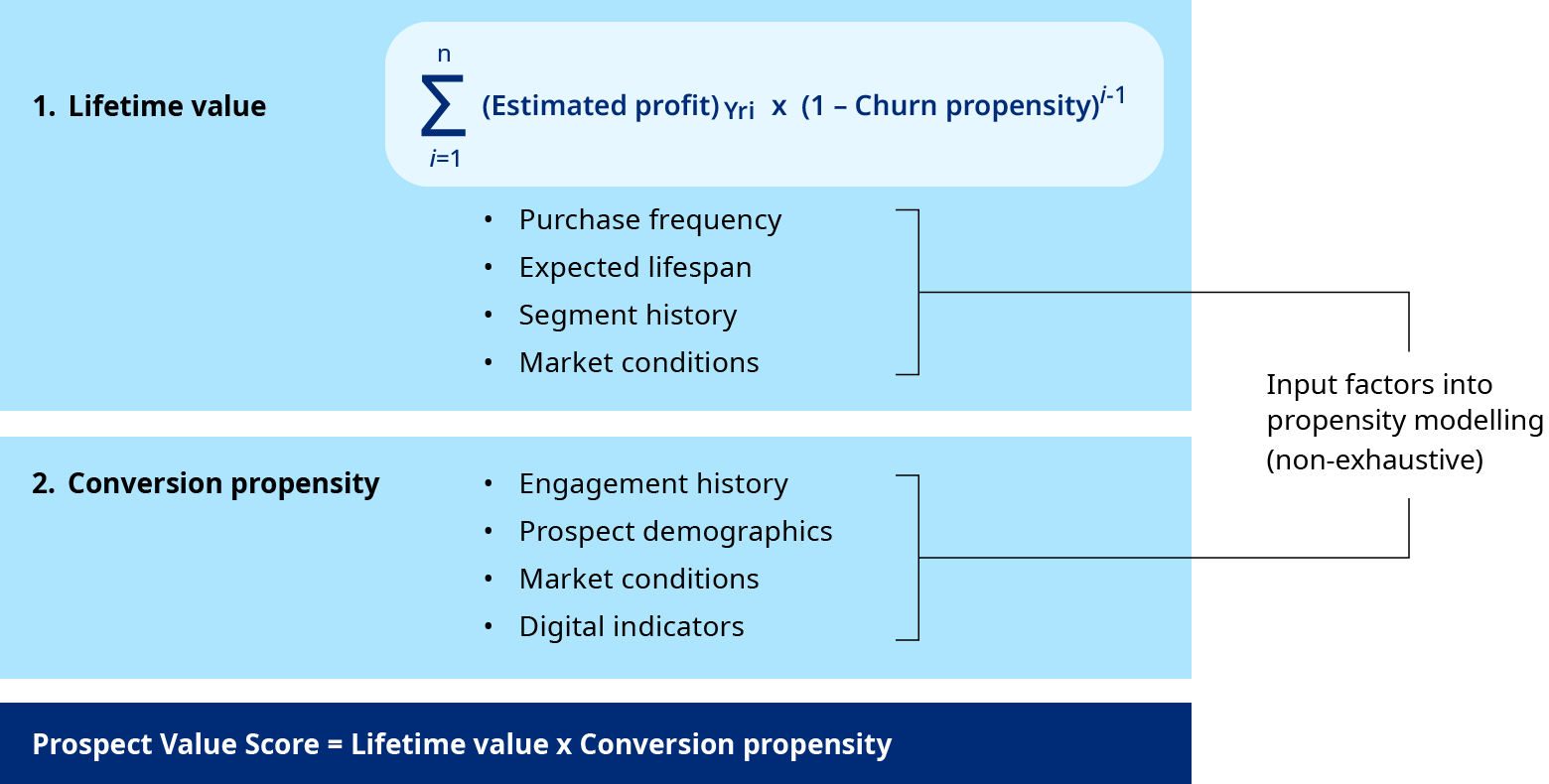Across many B2B companies, 2024 will be the year where businesses ask their salesforces to achieve more with less. Last year, two-thirds of B2B sales leaders said their organizations’ revenue levels had been moderately to severely affected by macroeconomic factors. The year prior, B2B win rates and average deal values dropped by 15% and 32% respectively, while sales cycle duration increased by an average of 32%, according to sales software firm Ebsta.
Still, by developing and deploying frameworks to identify sales opportunities on a promising trajectory, top-performing B2B companies were able to increase sales productivity and achieve better results in the last year. Ebsta’s analysis of more than 350 such businesses, for example, found that one professional services firm improved its sales velocity by 49% in 2023.
So how did these industry leaders pull it off? Effective digital sales, account-based marketing, and pricing are part of the answer, but these levers are not enough. There remains the fundamental challenge of driving structural change in sales productivity, as we found in our 2019 study “The Sales Force Effectiveness Paradox”: getting top performers to spend more time on prospects that have high propensity buying signals and high lifetime value.
In recent years, we see this pain point materialize due to an overabundance of disaggregated data sources, rather than a dearth of data. It permeates sales and commercial organizations as “priority paralysis” — conflicting “priority” prospects and customers signaled by a suite of sales tools and alerts, resulting in a lack of focus and indecision (or no decision). From leaders to field sales, these organizations are unable to discern how to prioritize their market and pipeline due to the vast amount of disparate data available. On average, about 10% of prospects are converted into qualified leads, with only 1-6% of those leads becoming customers. Even if it entails a significant mindset shift, it is critical for commercial teams to remember that not all customers are created equal.
How companies can prioritize the right prospects
We see three best practices that are helping B2B sales organizations turbocharge how they find, prioritize, and convert the best customers to drive profitable growth.
Build a holistic understanding of prospects through internal and external buying signals
Best-in-class organizations can connect their internal and external data in one place to make well-informed predictions about the behavior and buying habits of prospects. This requires cutting through the noise of abundant external data sources, including firmographics (such as segment, size, and other key demographic details), behavioral signals (search queries and other indications of interest from prospects), and macroeconomic conditions (GDP, inflation, and other trends). The most relevant data is then seamlessly integrated with transaction and engagement data to create comprehensive pictures of the company’s prospects and customers.
Rigorously ascertain customer lifetime value and propensity to buy, stay, and grow to drive targeting
With the proper internal and external data stitched together, companies can create a single priority score to guide salespeople’s activity. The score is based on a calculation of a prospect’s lifetime value and conversion propensity (Exhibit 1), which can be plotted on a 2x2 grid.

Each quadrant on the grid provides commercial teams direction on how to allocate their time and resources across prospects (Exhibit 2), helping them to generate the highest value from each minute spent selling.

According to the journal "Information Technology And Management”, those that use lead scoring models to prioritize their prospects can experience an increase of up to 70% in their return on investment for lead generation. The conversion rate from prospects to qualified leads also can improve by 15-20%, resulting in a higher number of leads eventually converting to customers. Of course, identifying leads to pursue is an ongoing effort. Best-in-class organizations prioritize efficiently and continuously, allocating time and resources to pursuing the prospects that are likely to convert and grow with the business through loyalty and affinity.
Put actionable insights, alerts, and tools in the hands of the field force
Salespeople are very busy, and so can be prone to missing sales signals, causing the company to join the sales conversation too late. Highly effective organizations ensure that their sales teams can efficiently react to sales signals in near-real-time to drive growth and reduce costs. In our research with survey provider proSapient last year, we found that 99% of B2B sales leaders expect generative AI and/or natural language processing (NLP) tools to affect their organizations. Harnessing these capabilities will be critical to elevating sales organizations to industry leadership.
Developing a holistic approach to sales productivity
Over the past few years, Oliver Wyman has worked hand-in-glove with commercial organizations across sectors to instill these best practices and drive efficient growth through the sales function, improving revenue in year one by 5-8% through a combination of conversion rate uplift, cross-selling, and retention. By developing a holistic view of leads, prospects, and accounts, ruthlessly prioritizing activity, and driving action, we have shown that commercial organizations can achieve more with less.

